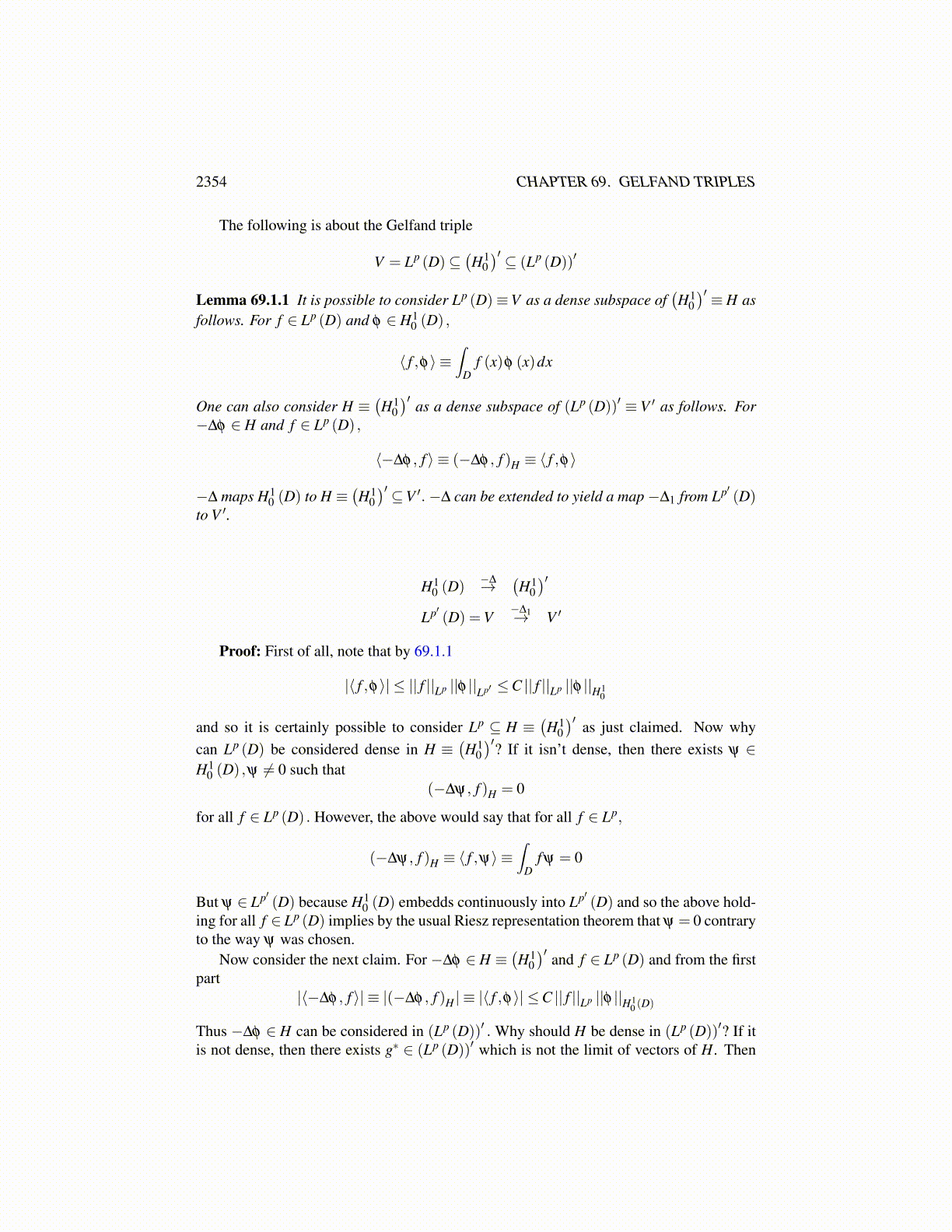
2354 CHAPTER 69. GELFAND TRIPLES
Consider a closed ball B(v0,r) in X . This equals{v ∈ X : sup
n|φ n (v)−φ n (v0)| ≤ r
}= ∩∞
n=1φ−1n
(B(φ n (v0) ,r)
)and this last set is in σ (D′). Therefore, every closed ball is in σ (D′) which implies everyopen ball is also in σ (D′) since open balls are the countable union of closed balls. SinceX is separable, it follows every open set is the countable union of balls and so every openset is in σ (D′). It follows B (X) ⊆ σ (D′) ⊆ σ (X ′). On the other hand, every φ ∈ X ′ iscontinuous and so it is Borel measurable. Hence σ (X ′)⊆B (X).
Now consider the last claim. From Lemma 21.1.6 and density of H ′ = H in V ′, it canbe assumed D′ ⊆ H = H ′. Therefore, from the first part of the argument
B (V )⊆ σ(D′)⊆ σ
(i∗H ′
)Also each i∗h is continuous on V so in fact, equality holds in the above because σ (i∗H ′)⊆B (V ). This proves the proposition.
Next I want to verify that V is in B (H). This will be true if V is reflexive. Moregenerally, here is an interesting result.
Proposition 69.0.4 Let X ⊆Y, X dense in Y and suppose X, Y are Banach spaces and thatX is reflexive. Then X ∈B (Y ).
Proof: Define the functional
φ (x)≡{||x||X if x ∈ X∞ if x ∈ Y \X
Then φ is lower semicontinuous on Y . Here is why. Suppose (x,a) /∈ epi(φ) so that a <φ (x) . I need to verify this situation persists for (x,b) near (x,a). If this is not so, thereexists xn→ x and an→ a such that an ≥ φ (xn) . If liminfn→∞ φ (xn)< ∞, then there exists asubsequence still denoted by n such that ||xn||X is bounded. Then by the Eberlein Smuliantheorem, there exists a further subsequence such that xn converges weakly in X to somez. Now since X is dense in Y it follows Y ′ can be considered a subspace of X ′ and so forf ∈ Y ′
f (xn)→ f (z) , f (xn)→ f (x)
and so f (z− x) = 0 for all f ∈Y ′ which requires z = x. Now x→ ||x||X is convex and lowersemicontinuous on X so it follows from Corollary 18.2.12
a = lim infn→∞
an ≥ lim infn→∞
φ (xn)≥ φ (x)> a
which is a contradiction. If liminfn→∞ φ (xn) = ∞, then
∞ > a = lim infn→∞
an = ∞
another contradiction. Therefore, epi(φ) is closed and so φ is lower semicontinuous asclaimed. Therefore,
X = Y \(∩∞
n=1φ−1 ((n,∞))
)and since φ is lower semicontinuous, each φ
−1 ((n,∞)) is open. Hence X is a Borel subsetof Y . This proves the proposition.